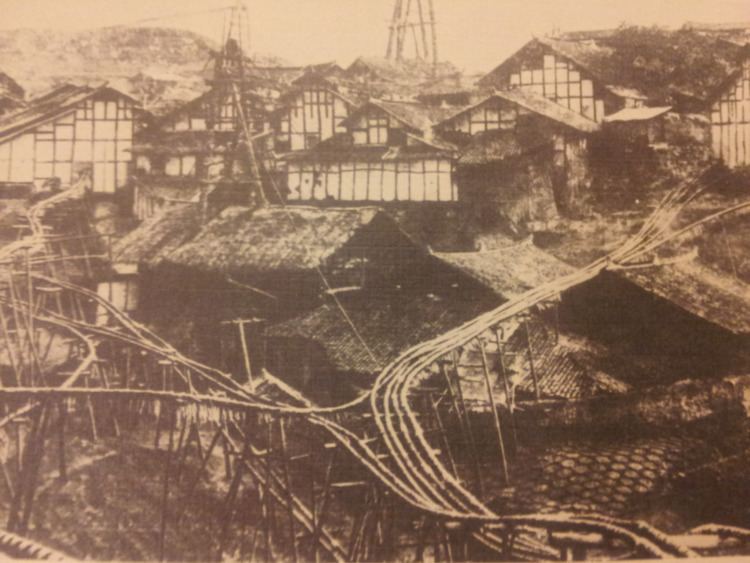Country China Local time Sunday 6:04 AM Prefecture Zigong | Time zone China Standard (UTC+8) Province Sichuan | |
 | ||
Weather 17°C, Wind N at 6 km/h, 73% Humidity University Sichuan University of Science and Engineering Points of interest Zigong Salt History Museum, Zigong Colored Lantern P, Caideng Park | ||
Ziliujing District, formerly romanized as Tzuliutsing, is a district of Zigong in Sichuan Province, China. The district covers 153 square kilometers (59 sq mi) and had a population of 330,000 people in 2005.
Contents
Map of Ziliujing, Zigong, Sichuan, China
History
According to Fang, China has always managed salt and iron, with Sichuan containing many salt deposits together with natural gas, especially in Ziliujing. "Invisible gas fire" was mentioned as early as the Han dynasty, gas wells were taxed by 1662, gas was used in one tenth of the salt evaporating plants by 1821 (the remainder using wood or charcoal), and by 1857 gas was the more common fuel. Li Jung describes the infrastructure around the salt business, "the building where money is handled is called the cashier's quarters, that immediately above the well is called the pestle quarters, that where the buffaloes turn the wheel to bring up the brine is called the wheel and buffalo quarters, that where the salt is stored in buckets is called the bucket quarters, that where the brine is evaporated is called the oven quarters. The wells used stone casing for the first hundred feet or so followed by wood for another 300 feet (91 m). An iron drill weighing up to 267 pounds (121 kg) is attached to a bamboo rope and when brine is reached, the well is called "success" or if no brine is reached by 3000 feet it is called "useless well". A well was drilled to 2,700 feet (823 m) in depth to reach the heaviest brine, the gas rising to the surface with a "rumbling noise", where the gas was contained by a wooden basin placed upside down over the well, from which protruded bamboo or wooden pipes, transporting the gas up to 1000 feet to salt evaporating boilers. Some gas wells serviced up to 700 boilers. Separate pipes carried the brine.
